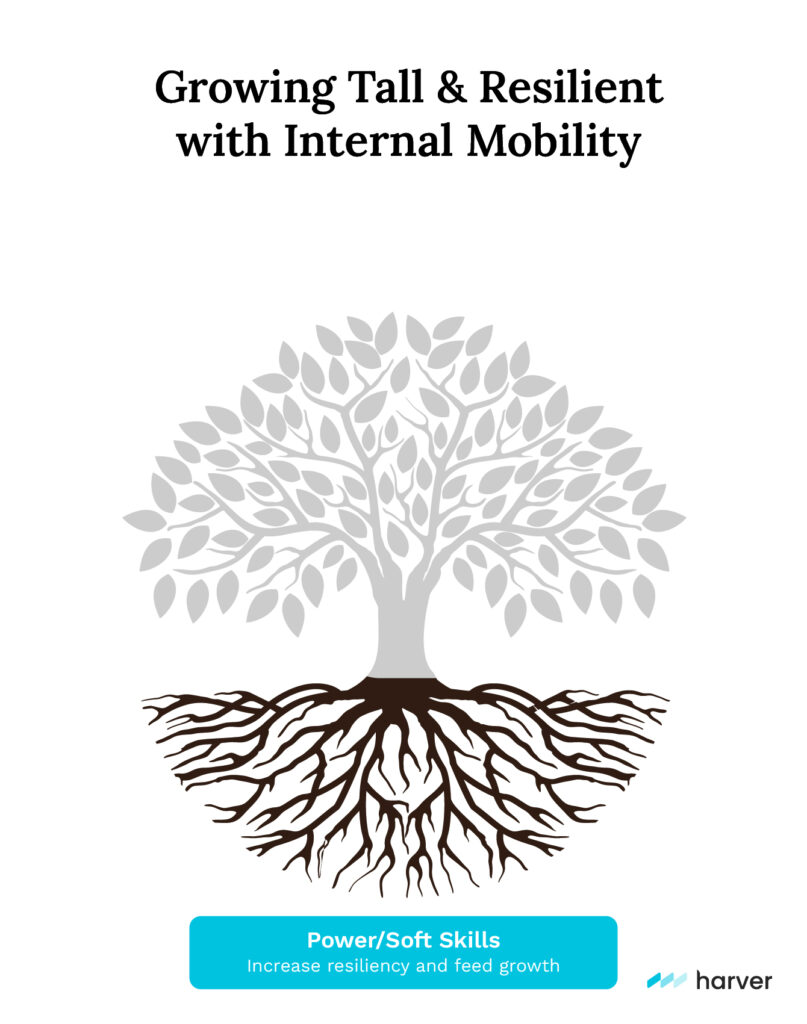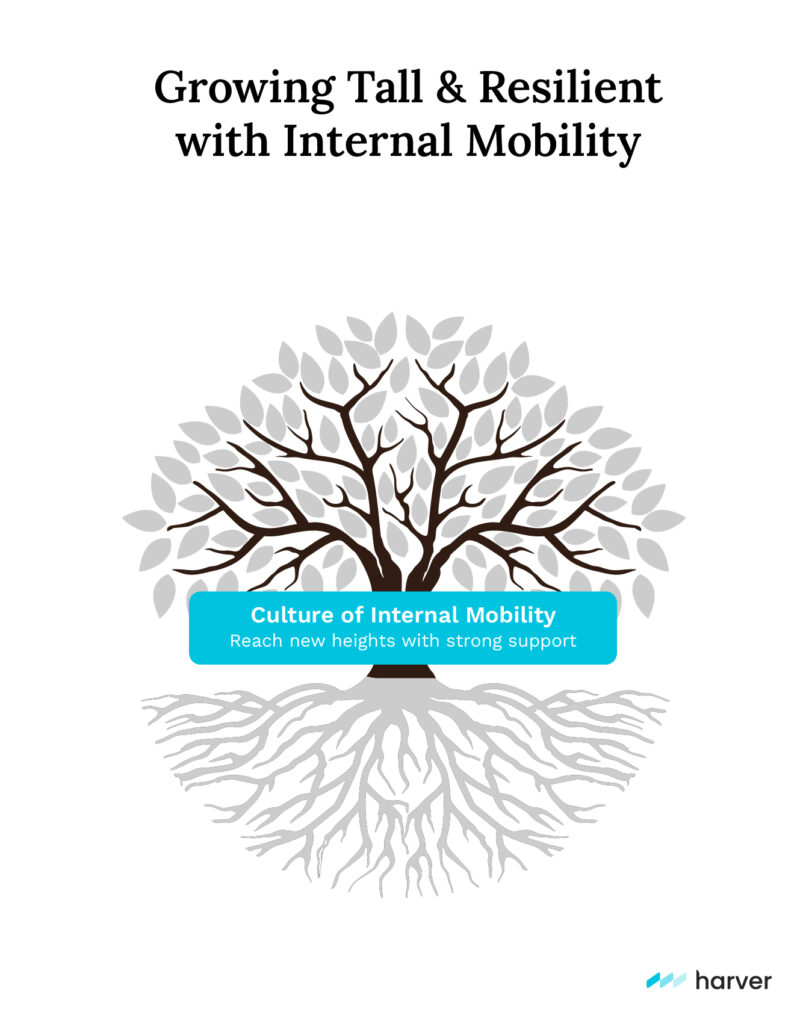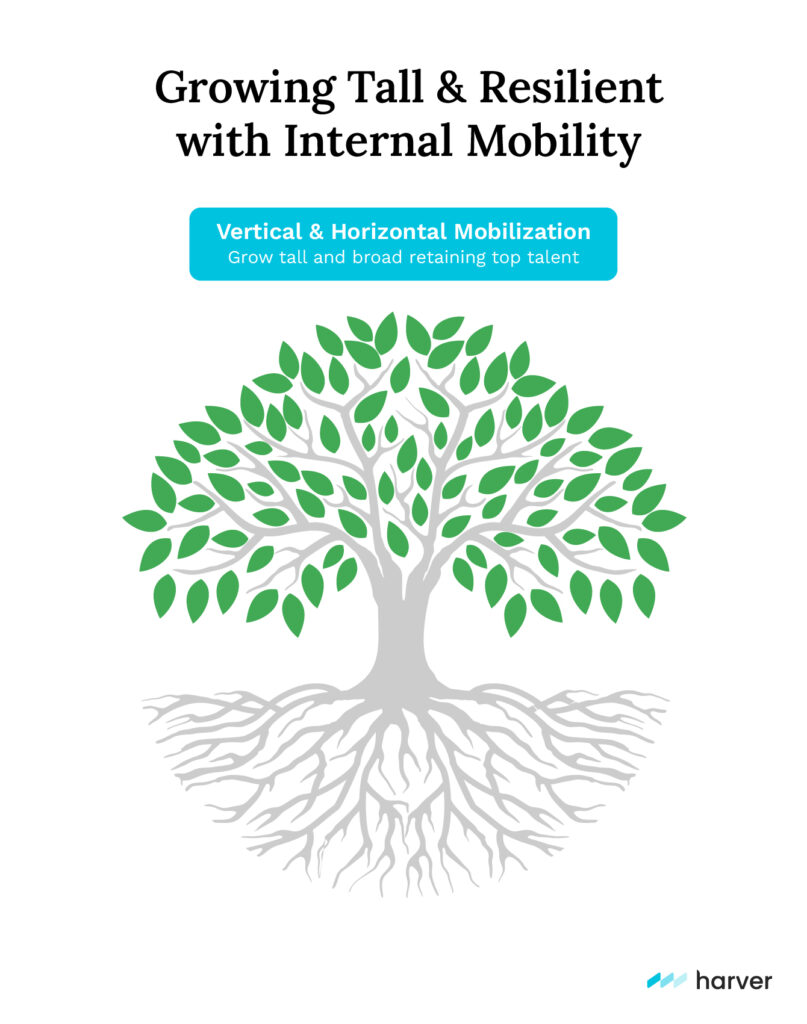Like many right now, you’re probably focused on developing and mobilizing your existing talent. Based on discussions at the recent Resourcing Leaders 100 (RL100) event, internal mobility is a top priority for talent acquisition professionals.
After all, the current economy and labor market make this a great time for promoting from within or hiring internally. Whether mobilizing vertically or horizontally, you can:
- Retain existing employees and their company knowledge
- Lower costs to hire (both recruiting costs and employee salaries)
- Increase employee engagement and strengthen employer value prop
“Internal mobility can add the resiliency and agility organizations need, especially in times of VUCA (Volatility, Uncertainty, Complexity, Ambiguity).”
Angelita Colbert, VP Talent Development & Employee Experience at Harver
How to get started with internal mobility
Taking inspiration from the recent Earth Day holiday, there’s an old saying: “The best time to plant a tree is 30 years ago. The second best time is today.”
Similar to an employee developing over time, you can grow your internal mobility program in stages, too. To help you save on hiring costs, retain top talent, and add critical skills to your organization as soon as possible, here are three fast tips for enabling internal mobility starting today.

1. Plant strong roots for internal mobility
Power skills act like resilient roots that spread far and wide, like giving you insights into interpersonal and other skills that correlate to success in other roles across your company. The key here is measuring them first. Also called soft skills, power skills can help you identify high-potential internal job seekers for leadership training and succession planning.
By assessing how well your existing workforce communicates, collaborates, solves problems, and makes decisions, you gain valuable insights into your employees’ strengths and weaknesses. “Assessments are a powerful way to turn the light bulb on,” says Colbert. “With objective science as a basis, employee self-reflection and growth helps talent to shine and gives employers better visibility into their workforce.”
Power skills, like the roots of a tree, can be your base for stability and strength. The better you can understand the distribution of power skills across your organization, and the specific strengths and weaknesses of individual employees, the easier it becomes to see the forest and the trees.
Internal mobility tip: Start today by looking into science-based assessment solutions. For instance, Harver’s breadth of cognitive and behavioral assessments give you options for unlocking internal mobility with objective data.

2. Grow tall by fostering a culture of internal mobility
According to a Pew Research Center survey, lack of opportunities for advancement was tied with low pay as the top reason why workers left a job.
Well, if power skills are the roots of your tree, then a culture of internal mobility is the trunk that enables your organization to reach new heights by retaining and growing talent. To do this, you need buy-in from top stakeholders, engaged and trained managers, and aware and motivated employees.
Something you can do right now is identify employees who’ve mobilized into new roles organically so you can promote their stories in company newsletters and other channels. Highlighting these success stories can demonstrate to all levels the value of hiring internally.
It also helps to train managers to spot ambitious, innovative employees. Without engaged managers buying into a culture of enabling mobility, direct reports will be motivated to turn to external opportunities for growth. Do you really want to become just another Pew Research Center statistic?

3. Branch out with internal mobility opportunities
Think of how your existing employees can grow and move into different opportunities across your organization. There are many different branches available, from climbing higher along an employee’s existing branch to covering entirely new ground.
Permanent, full-time transitions into leadership or new role is a main path to mobilizing your internal workforce. Enable mobility in this form by setting up an internal job board. This gives employees a centralized source for checking and discovering open opportunities. For instance, Harver promotes new openings on a company-wide Slack channel specifically created to increase visibility.
Internal mobility tip: Give internal talent the inside track with an exclusive window to apply. For example, at Harver, we offer employees a week’s head start, which is enough to motivate seekers without slowing down external promotion, if needed.
As VP of Talent Development and Employee Experience at Harver, Angelita Colbert has one more piece of internal mobility advice: “Keep in mind that full-time or permanent role changes aren’t your only option. Other internal mobility ‘branches’ that offer less permanent coverage include cross-functional projects, job shares or swaps, short-term gigs, or mentorships.”

Overcoming volatility and uncertainty with mobility
Filling in-demand roles with existing talent can empower your organization to thrive even during challenging times. While your “internal mobility tree” might not be in full bloom just yet, you can get started today by:
- Measuring power skills with an objective assessment
- Training managers and fostering a culture of internal mobility
- Offering and promoting a range of mobilization opportunities
To help you continue maturing your talent acquisition strategies despite economic and labor uncertainty, check out our webinar featuring The Josh Bersin Company. Watch it on-demand for valuable research and insights, including a talent acquisition framework and maturity model.

